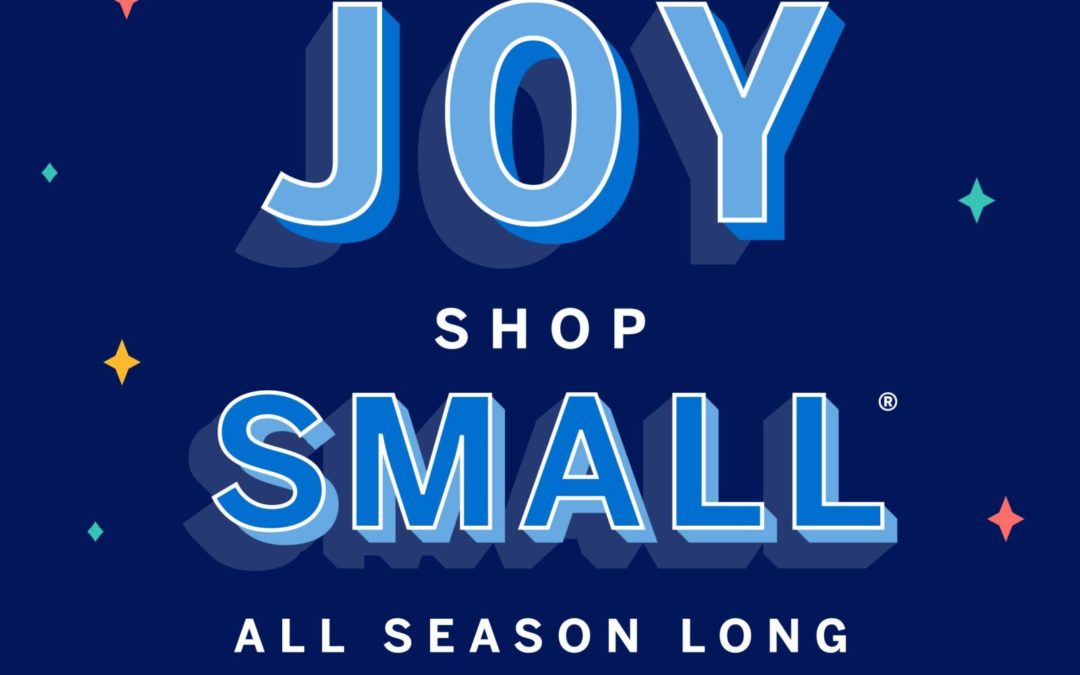


Does Your Corporate Culture Get All A’s? The proactive process to shape the team culture you want.
BY JASON BARGER
It’s an instant gratification world where people/employees/leaders want things to change immediately. They want progress to be a flip of a switch. They want the easy button. Every leader, team and organization wants to snap their fingers and magically arrive at their desired outcomes.
However, developing people and culture doesn’t happen like that. There is no quick fix or hack to developing leaders and the team culture you desire. It’s a process. It takes commitment, discipline and focus. The most compelling team and organizational cultures invest time, energy and resources into shaping the culture they want, not just the culture they’ve experienced in the past. They know that one of their greatest competitive advantages in today’s day is not just WHAT they do as a company, but the culture of HOW they do it. People want to be a part of a compelling culture and contribute their skills to something greater than themselves.
Every team and company wants to be known for having an amazing culture, but only some understand how they are created and are disciplined enough to lead a culture-shaping process. If you’ve studied change theory in your spare time (you know, the process for how any person or group stimulates change) then you understand the reality that we grow as individuals and groups one step at a time.
All change follows the same pattern. The best leaders and teams on the planet know that growing the ecosystem they desire within their organization takes proactive leadership and support. The best team cultures don’t just magically happen, they are intentionally designed and led along the process. And it’s not a top-down dictator style of leadership that is compelling to people, but a participatory style that invites cross-functional representation throughout the organization to share in the dreaming and creation of the culture they desire.
The process to create your culture requires 6 A’s and participatory leadership:
Assess — Many cultures don’t even know where they are on the map. Where are you succeeding and where are you falling short? You’ve got to be honest about your current state as a culture. Momentum begins to build when you can establish urgency and identify opportunities to improve.
Align — People are the lifeblood of every team and organization and in today’s world your people want to participate. They want their mind and heart to be engaged and connected to the “Why,” the Mission at the heart of your efforts. It takes time and space to establish alignment with your people and constant efforts to stay in alignment along the way.
Aspire — What do you want to be different in the future? You have to be able to dream together and paint the vision for the future culture you desire. Give your people the opportunity to see beyond your current reality and into possibilities for a newly created future.
Articulate — If you can’t describe where you’re going and the values you want to guide you as a culture then you can’t be surprised when it doesn’t exist. Your people need common language and the ability to see and share the story of where you’re heading, together. “Language drives behavior” so the best cultures have compelling language linked to actions and behaviors for the future they are creating.
Act — All change requires action. However, action without vision and alignment is a nightmare. Once the aspirational vision for the culture is established, the best leaders and teams empower a bias toward action and identify the next steps they will take to stimulate progress. All change happens when actions grow out of an intentional vision and spirit.
Anchor — Culture-shaping is not a drive-thru experience. It’s not a one-time company meeting or a singular poster on the wall. Every culture must create habits that anchor the values within their organizational ecosystem. The organization intentionally anchors them with their structures for how they hire, onboard employees, identify emerging leaders, do performance evaluations, raise the bar on leadership at all levels, and develop and empower culture ambassadors.
So, does your team culture get all A’s?
Good grades don’t just magically happen. Great schools, great companies, great teams, great communities, and great collections of humans anywhere and of any kind in the world, don’t just magically happen. They are grown, developed, cultivated and led with intentionality.
It’s way easier to ignore studying, practicing, engaging with your people, and just put your head down and “do your job.” And because that is easier, that’s why many team cultures do not become compelling places to work.
The process for developing high-performing and engaged cultures never stops and the best leaders, teams and organizations are committed to the continuous journey of development, vision, communication, engagement, authenticity, and action.
Good luck on your next test. I hope you get all A’s.
About the Author:
Jason V. Barger is the globally-celebrated author of Thermostat Cultures, ReMember and Step Back from the Baggage Claim as well as the host of The Thermostat podcast. As Founder of Step Back Leadership Consulting, he is a coveted keynote speaker, leadership coach and organizational consultant who is committed to engaging the minds and hearts of people and growing compelling cultures. Learn more at JasonVBarger.com

Quick Guide to Marketing for Small Business Saturday – November 30
Organizations have many options when it comes to marketing for Small Business Saturday, which occurs on the first Saturday after Thanksgiving. Small Business Saturday encourages consumers to support local businesses. The event drives attention to local small companies, presenting them with an opportunity to create brand awareness and increase local sales.
Taking advantage of Small Business Saturday requires planning, executing, and financing strategies. Funding your efforts can be done through securing a small business loan. The working capital can be used to hire seasonal staff, purchase extra inventory, or pay for a marketing campaign.
However, marketing isn’t always simple. Here’s what you need to know and how to take advantage of small business’s big day.
Ramp Up Digital Marketing for Small Business Saturday
Brands must work to engage customers through both digital and physical means. This omnichannel experience begins with digital marketing basics. You Should Consider:
Building Relationships on Social Media: Connecting with customers on social media can help you capture additional holiday sales. When marketing for Small Business Saturday, you may want to gradually tease out your plans for the big day. You can use social media to broadcast a special offer or invite customers to an in-store event. Social media is ideal for highlighting how you plan to celebrate Small Business Saturday. When posting on social media, be sure to include the #ShopSmall and #SmallBizSat hashtags.
Using Email Marketing: Email campaigns are an effective way to garner consumer attention and bring awareness to exclusive Small Business Saturday deals. It’s important to go beyond broad, generic messages. Personalization is increasingly vital in standing out in email campaigns. Key Strategies to Employ:
- Take the time to get to know your audience.
- Create copy aimed directly at them.
- Highlight promotions that fit their needs.
- Give them a clear action to take in response to the message.
Fostering Online Reviews: Consumers actively research products and services before committing to a purchase. Consider teaming up with an influencer who has a large following and a fair amount of influence within your area or niche. You can send them product samples in return for an honest review. This will help drive visibility and increase consumer confidence.
Implement Traditional Advertising Programs
Small businesses benefit from the ability to offer localized, personal services. You can leverage your relationship with your community to build trust and increase brand awareness. Traditional advertising campaigns can be ideal for furthering your presence in your community. Key Strategies to Employ:
Getting Involved With Your Local Xommunity: Participating in community service events helps you get to know those around you. And helps them get to know your business. Interacting with potential customers in a community setting shows that you’re interested in relationship building rather than just maximizing sales. You could consider sponsoring a charity or local event. Successful community involvement plans require commitment and a genuine interest in what you’re doing.
Run Ad Campaigns With Local Media: If you want to drive engagement at a local level, you must use channels that are specifically aimed at your local community. Your message can slip into the background on far-reaching media channels, but an ad campaign in a local paper can go a long way in helping people connect with your brand.
Offer Deals and Promotions: It’s critical to recognize the importance of deals and promotions when marketing for Small Business Saturday. Limited time offers, and discounts can persuade customers who are on the fence about your products and services to give them a try.
Prepare Your Systems and Operations
If you’re successful at marketing for Small Business Saturday, then you’ll need to be prepared for an increase in volume and customer interactions. Consider:
Optimizing for Mobile: Consumers do everything from product research to actual purchases via smartphones and tablets. Make sure your website is mobile optimized. If your website is not optimized for mobile, you risk running into problems as you work to increase traffic surrounding Small Business Saturday.
Updating Your Website: Make sure your address and contact info is correct on your website. Additionally, review your site to make sure that promotions are prominently displayed, and your payment process is working properly. Put new product pictures out if your current listings seem dated and ensure copy properly reflects your services. Take time to upgrade and adjust your site before the big event.
Hiring Seasonal Staff: Since Small Business Saturday falls in line with the holiday season, it’s a convenient time to bring in extra staff. Seasonal employees can be used to help launch a new marketing campaign, handle sales, or interact with customers.
Managing Your Inventory: One of the most important considerations for Small Business Saturday is that you have plenty of goods to sell. A boost in sales won’t matter if you don’t have inventory available to meet customer needs. Take some time to analyze your supplies and ensure you’re ready for the increase in demand.
By participating in Small Business Saturday, local businesses receive quite a few perks including community support, great local marketing opportunities, and the high potential to reach new customers. Utilize the above marketing strategies to better prepare for Small Business Saturday and take advantage of the shopping frenzy.
 Ben Gold is president of QuickBridge, a privately-held financial services firm providing “small business loans” and short-term working capital funding solutions for small-to medium-sized businesses nationwide. Based on its growth, QuickBridge has ranked two consecutive years on the Inc. 500 Fastest Growing American Companies list. Ben is a thought leader in the financial tech. industry and a contributing member of the Forbes Finance Council.
Ben Gold is president of QuickBridge, a privately-held financial services firm providing “small business loans” and short-term working capital funding solutions for small-to medium-sized businesses nationwide. Based on its growth, QuickBridge has ranked two consecutive years on the Inc. 500 Fastest Growing American Companies list. Ben is a thought leader in the financial tech. industry and a contributing member of the Forbes Finance Council.

Quick Guide to Marketing for Small Business Saturday – November 30
Organizations have many options when it comes to marketing for Small Business Saturday, which occurs on the first Saturday after Thanksgiving. Small Business Saturday encourages consumers to support local businesses. The event drives attention to local small companies, presenting them with an opportunity to create brand awareness and increase local sales.
Taking advantage of Small Business Saturday requires planning, executing, and financing strategies. Funding your efforts can be done through securing a small business loan. The working capital can be used to hire seasonal staff, purchase extra inventory, or pay for a marketing campaign.
However, marketing isn’t always simple. Here’s what you need to know and how to take advantage of small business’s big day.
Ramp Up Digital Marketing for Small Business Saturday
Brands must work to engage customers through both digital and physical means. This omnichannel experience begins with digital marketing basics. You Should Consider:
Building Relationships on Social Media: Connecting with customers on social media can help you capture additional holiday sales. When marketing for Small Business Saturday, you may want to gradually tease out your plans for the big day. You can use social media to broadcast a special offer or invite customers to an in-store event. Social media is ideal for highlighting how you plan to celebrate Small Business Saturday. When posting on social media, be sure to include the #ShopSmall and #SmallBizSat hashtags.
Using Email Marketing: Email campaigns are an effective way to garner consumer attention and bring awareness to exclusive Small Business Saturday deals. It’s important to go beyond broad, generic messages. Personalization is increasingly vital in standing out in email campaigns. Key Strategies to Employ:
- Take the time to get to know your audience.
- Create copy aimed directly at them.
- Highlight promotions that fit their needs.
- Give them a clear action to take in response to the message.
Fostering Online Reviews: Consumers actively research products and services before committing to a purchase. Consider teaming up with an influencer who has a large following and a fair amount of influence within your area or niche. You can send them product samples in return for an honest review. This will help drive visibility and increase consumer confidence.
Implement Traditional Advertising Programs
Small businesses benefit from the ability to offer localized, personal services. You can leverage your relationship with your community to build trust and increase brand awareness. Traditional advertising campaigns can be ideal for furthering your presence in your community. Key Strategies to Employ:
Getting Involved With Your Local Xommunity: Participating in community service events helps you get to know those around you. And helps them get to know your business. Interacting with potential customers in a community setting shows that you’re interested in relationship building rather than just maximizing sales. You could consider sponsoring a charity or local event. Successful community involvement plans require commitment and a genuine interest in what you’re doing.
Run Ad Campaigns With Local Media: If you want to drive engagement at a local level, you must use channels that are specifically aimed at your local community. Your message can slip into the background on far-reaching media channels, but an ad campaign in a local paper can go a long way in helping people connect with your brand.
Offer Deals and Promotions: It’s critical to recognize the importance of deals and promotions when marketing for Small Business Saturday. Limited time offers, and discounts can persuade customers who are on the fence about your products and services to give them a try.
Prepare Your Systems and Operations
If you’re successful at marketing for Small Business Saturday, then you’ll need to be prepared for an increase in volume and customer interactions. Consider:
Optimizing for Mobile: Consumers do everything from product research to actual purchases via smartphones and tablets. Make sure your website is mobile optimized. If your website is not optimized for mobile, you risk running into problems as you work to increase traffic surrounding Small Business Saturday.
Updating Your Website: Make sure your address and contact info is correct on your website. Additionally, review your site to make sure that promotions are prominently displayed, and your payment process is working properly. Put new product pictures out if your current listings seem dated and ensure copy properly reflects your services. Take time to upgrade and adjust your site before the big event.
Hiring Seasonal Staff: Since Small Business Saturday falls in line with the holiday season, it’s a convenient time to bring in extra staff. Seasonal employees can be used to help launch a new marketing campaign, handle sales, or interact with customers.
Managing Your Inventory: One of the most important considerations for Small Business Saturday is that you have plenty of goods to sell. A boost in sales won’t matter if you don’t have inventory available to meet customer needs. Take some time to analyze your supplies and ensure you’re ready for the increase in demand.
By participating in Small Business Saturday, local businesses receive quite a few perks including community support, great local marketing opportunities, and the high potential to reach new customers. Utilize the above marketing strategies to better prepare for Small Business Saturday and take advantage of the shopping frenzy.
 Ben Gold is president of QuickBridge, a privately-held financial services firm providing “small business loans” and short-term working capital funding solutions for small-to medium-sized businesses nationwide. Based on its growth, QuickBridge has ranked two consecutive years on the Inc. 500 Fastest Growing American Companies list. Ben is a thought leader in the financial tech. industry and a contributing member of the Forbes Finance Council.
Ben Gold is president of QuickBridge, a privately-held financial services firm providing “small business loans” and short-term working capital funding solutions for small-to medium-sized businesses nationwide. Based on its growth, QuickBridge has ranked two consecutive years on the Inc. 500 Fastest Growing American Companies list. Ben is a thought leader in the financial tech. industry and a contributing member of the Forbes Finance Council.

How to Survive the Coming Data Privacy Tsunami
 Author, KRISTINA PODNAR is a digital policy innovator. For over two decades, she has worked with some of the most high-profile companies in the world and has helped them see policies as opportunities to free the organization from uncertainty, risk, and internal chaos. Podnar’s approach brings in marketing, human resources, IT, legal, compliance, security, and procurement to create digital policies and practices that comply with regulations, unlock opportunity, strengthen the brand and liberate employees.
Author, KRISTINA PODNAR is a digital policy innovator. For over two decades, she has worked with some of the most high-profile companies in the world and has helped them see policies as opportunities to free the organization from uncertainty, risk, and internal chaos. Podnar’s approach brings in marketing, human resources, IT, legal, compliance, security, and procurement to create digital policies and practices that comply with regulations, unlock opportunity, strengthen the brand and liberate employees.
Just as we have gotten used to the idea that the EU’s General Data Protection Regulation (GDPR) is a fact of life and have made modifications in our data collection procedures, the Brazil General Data Protection Law (LGDP), the California Consumer Privacy Act (CCPA), and waves of proposed new data privacy laws are swirling in the calm forewarning of a privacy tsunami heading our way. In the middle of such deep acronym swirls, it could be easy to be overwhelmed. However, all the privacy regulations share a number of commonalities and by addressing these now, you will be on high ground as the waves begin to pound.
The compliance life raft
While you will need to pay attention to the details of individual data regulations as they arise, whether already adopted, pending adoption, or only proposed, all the regulations share certain commonalities that you should consider addressing as part of ongoing operations.
Accountability and governance
At the heart of data privacy requirements is the aim to have organizations develop a plan to self-manage data in a way that respects end users. To address accountability and governance requirements in your organization, consider, have you:
- Reviewed the applicability and risk to the organization from data privacy issues, and considered alternatives, including insurance, in case you are fined?
- Mandated that data privacy become part of the policy program, including staff training, measurement, and compliance reporting?
- Clearly documented roles, responsibilities, and reporting lines to embed privacy compliance
Consent and processing
A fundamental privacy regulation concept is that end users are aware when and why their data is collected, and what happens to it once it’s given. To address these requirements, ask yourself whether you have:
- Reviewed that the data being collected and used is necessary and for the benefit of completing a desired action by the user?
- Identified sensitive data and ensured it is treated as such through the use of special encryption or by validating vendor storage practices for sensitive data, etc.?
- Confirmed that user consent for data collection is clearly captured and documented, and that user data can be modified or erased?
Notifications and data rights
Gone are the days of legalese or simply taking data from users because we can. Data privacy regulations require transparency, user awareness, and forthright behavior by businesses. To ensure you get this right, ask yourself whether the organization has:
- Written user notices clearly so they can be easily understood—properly targeted to children where relevant—and are reflective of specific data collection and usage purposes?
- Updated the internal organization’s data privacy policy to clearly state the rights of prospects and customers regarding the collection and processing of their personal data?
- Created and tested processes to correct and delete all user data if needed?
- Developed a solution to give users their data in a portable electronic format?
Privacy design
Organizations that treat privacy as a core design principle will always be in alignment with data privacy regulations. In my consulting experience, I see many self-disciplined organizations that have historically had good privacy practices and have little to address with each new law. To get to that state, ask whether you have:
- Created or updated the policy and associated process to embed privacy into all technology and digital projects, including those outsourced to vendors and partners?
Data breach notification
For many organizations, the question nowadays isn’t whether the organization will have a breach, but rather when will it happen and how will they respond. To address regulatory breach aspects, ask whether the organization has:
- Created (or reviewed and updated an existing) data breach policy and response plan to reflect detection, notification, and the actions to mitigate loss?
- Considered and obtained insurance for a possible data breach and regulatory penalties that the organization may face but not be able to handle on its own?
- Incorporated data breach terms and requirements into all vendor and third-party contracts?
Data localization
New data privacy regulations state where data physically must be stored, and if transferred to another country, what are the requirements for doing so. Your organization will be well positioned to meet this requirement if it can answer:
- Have we identified and updated all cross-border data flows from the country where the data is collected, and reviewed data export for on-premise and cloud solutions?
Children’s online privacy considerations
Data privacy regulations are concerned with end users, but are even more strict about children and their online data protection and rights. It is best to get ahead of these issues by asking whether the organization has:
- Defined what data it collects from children, whether as a business practice or through efforts like “take your child to work day”?
- Are user notifications and online privacy statements written in a way that a child could understand them, and do they state that parental consent is required?
Contracting and procurement
Most businesses may struggle to understand exactly what personal user data is collected via websites, mobile applications, and other digital platforms, especially through third-party software solutions and vendors. To make sure that your organization isn’t caught out, ask whether you have:
- Reviewed and ensured that all vendors, customers, and third-party agreements reflect data regulatory requirements?
- Defined procurement processes such that privacy is integrated into all products and services the organization buys, including regarding data minimization, the visibility of onward data flows, and data ownership?

The One Form of Marketing That ALWAYS Works
By Ted Janusz
Can you relate to this? John Wannamaker, the Philadelphia department store magnate, said “Half the money I spend on advertising is wasted; the trouble is, I don’t know which half.” But there is one form of marketing, that ALWAYS works … what is it?
WORD OF MOUTH!
Of course, now with the internet and social media, you could call it WORLD of mouth marketing. People are six times more likely to rely on the word of other people when making a buying decision rather than advertising.
In fact, 80% of consumer buying decisions are based on personal recommendations. Here’s why it works …
The average American adult knows 400 people … people you work with, went to school with, or people you know socially. If you assume each of those 400 people know 400 others (of course, there will be some overlap – but let’s keep it simple), you now have an immediate network of 140,000 people.
And if you assume those 140,000 people know 400 others, you are up to one-third of the US population. And what will people spread about your business, good news or bad? Right! Bad news!
Your average satisfied customer will tell 5 to 8 others. But your average upset customer (if you have any) will 10 to 16. In fact, one in five will tell 20 people how upset you have made them.
In their book Creating Customer Evangelists, authors Ben McConnell and Jackie Huba say, “Competition for entertainment dollars – where Dallas Mavericks owner Mark Cuban says he competes – is fierce. To succeed, he must continually focus on increasing the average lifetime value of a Mavs season ticket holder. In 2002, that figure was $300,000, according to Cuban. “The Chicago Cubs, you’ve got to wait in line to get your season tickets,” he says. “That’s the goal … then I don’t have to spend lots of money on salespeople and all kinds of support efforts – I’ve just got to keep [customers] happy. It’s a lot easier to keep ‘em happy than to go out and get new ones to replace ‘em.”
Now the lifetime value of one of your customers may not be $300,000 like it is for the Dallas Mavericks. But once you determine what that value is for you, you’ll realize how important to keep those customers happy – since they, bar none, are your best source of marketing.
Ted Janusz, MBA, CSP is a Certified Speaking Professional who has delighted audiences for more than 5,000 hours, in 49 of the 50 United States, in Canada from Halifax to Vancouver, in Australia, Mexico, and Puerto Rico. Learn more at www.januspresentations.com.



